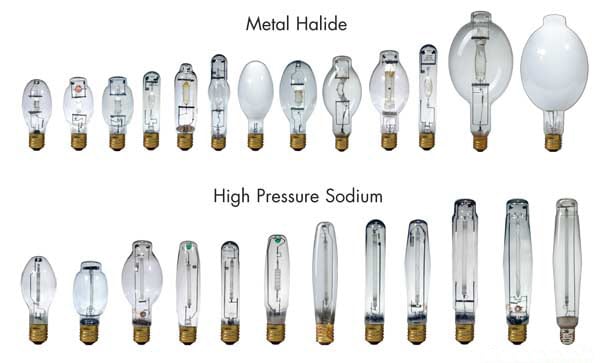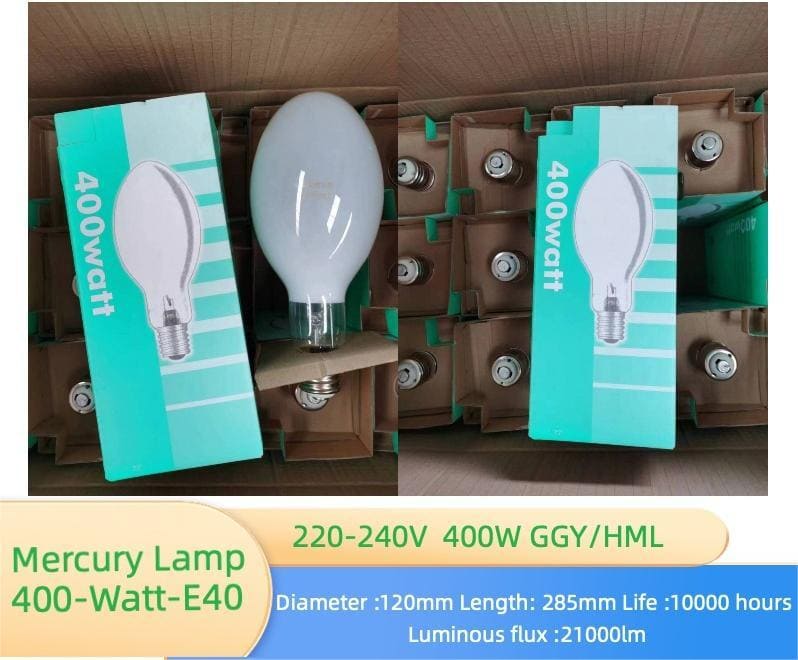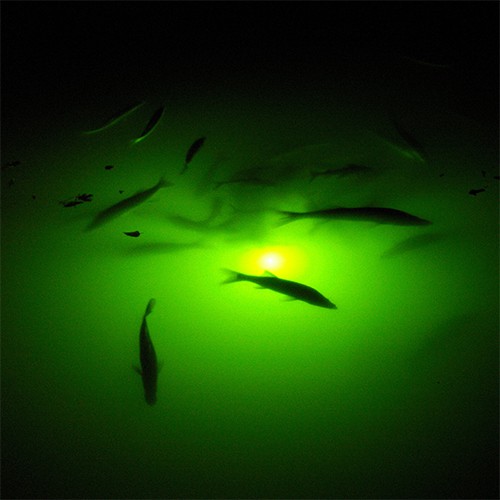Mercury vapor lamps have been the go-to for lighting large outdoor areas, industrial spaces, and streets. However, with the increase in environmental regulations and the demand for energy efficiency, their use has gone way down. In this article, we’ll talk about why their use has decreased, where they are still being used and what some of the modern alternatives are.
Mercury vapor lamps are still used in some applications like industrial, fish lighting, street and outdoor lighting, but they have mostly been replaced by more energy efficient lamps like metal halide and LED because of environmental regulations and better efficiency.
Let’s talk about why mercury vapor lamps are going away and what other options we have.
The Decline of Mercury Vapor Lamps
Mercury vapor lamps were once the go-to choice for illuminating large outdoor areas, streets, and industrial spaces due to their ability to produce bright light over a wide area. They operate by passing an electrical arc through vaporized mercury inside a high-pressure tube, producing a bright and consistent light source. For decades, they were praised for their long lifespan and durability, particularly in extreme weather conditions.
However, in recent years, their popularity has waned, primarily due to environmental concerns and advances in lighting technology. Mercury, the key component of these lamps, is highly toxic and poses a significant environmental threat. When mercury vapor lamps are disposed of improperly, mercury can be released into the environment, contaminating soil and water supplies. This has led to stringent regulations around the production and disposal of mercury-based lighting, with many countries imposing restrictions or outright bans on the sale of new mercury vapor lamps.
Another factor contributing to the decline is the relatively low energy efficiency of mercury vapor lamps. Compared to modern alternatives, these lamps consume more electricity to produce the same amount of light. With rising energy costs and increased focus on sustainability, many businesses and municipalities have shifted toward more efficient lighting solutions.
Despite these drawbacks, mercury vapor lamps can still be found in older installations, particularly in areas where retrofitting to new lighting systems would be costly or logistically difficult.
Advantages of Mercury Vapor Lamps
While mercury vapor lamps are being phased out in many regions, they still offer some advantages that have kept them in use for specific applications. One of their primary benefits is their long operational life. These lamps can last up to 24,000 hours or more, reducing the need for frequent replacements. In certain cases, they can even outlast newer lighting technologies if maintained properly.
In addition, mercury vapor lamps produce a bright, consistent light with relatively good color rendering, especially in later versions of the technology. This makes them suitable for applications where light quality is important, such as outdoor lighting in parks, landscapes, or certain industrial settings. Their robustness and ability to perform well in harsh weather conditions also make them a practical choice in areas that experience extreme temperatures or high levels of humidity.
For some applications, like specific types of outdoor lighting, users continue to prefer mercury vapor lamps for their established reliability. In certain landscapes or architectural lighting settings, the particular light quality they emit is seen as favorable, especially in terms of creating a specific ambiance.
Environmental and Efficiency Concerns
The decline of mercury vapor lamps is largely driven by environmental concerns. Mercury is a known neurotoxin that poses serious risks to both human health and the environment. Once mercury vapor lamps are discarded in landfills, they can break down and release mercury into the surrounding soil and groundwater. Ingesting mercury through contaminated water or food can lead to severe health issues, including cognitive impairments and other neurological disorders.
These environmental concerns have led many governments around the world to regulate or ban the production and sale of mercury vapor lamps. In the United States, for example, the Energy Policy Act of 2005 prohibited the manufacture and import of most mercury vapor lamp ballasts, essentially signaling the beginning of the end for these lamps in the U.S. market.
Additionally, the energy efficiency of mercury vapor lamps lags significantly behind more modern technologies. Their relatively low lumen-per-watt output means that they require more energy to produce the same amount of light as newer lighting solutions like metal halide and LED lamps. This inefficiency results in higher operating costs for businesses and municipalities, making it less economically viable to continue using these lamps in large-scale lighting applications.
Alternatives to Mercury Vapor Lamps
As mercury vapor lamps continue to be phased out, more energy-efficient and environmentally friendly alternatives have emerged. The two most popular replacements are metal halide lamps and LED (light-emitting diode) lamps.
Metal halide lamps are a type of high-intensity discharge (HID) lamp that operates on a similar principle to mercury vapor lamps but offers several key improvements. Metal halide lamps provide better energy efficiency and produce about 25% more light than mercury vapor lamps. They also offer improved color rendering, making them ideal for use in stadiums, industrial facilities, and other areas where high-quality lighting is required. Additionally, they have a shorter warm-up time compared to mercury vapor lamps, providing more convenience in applications that require quick lighting.
LED lamps, on the other hand, represent the most energy-efficient lighting option available today. LEDs use significantly less power to produce the same or even greater brightness than both mercury vapor and metal halide lamps. They are also mercury-free, eliminating the environmental risks associated with mercury vapor lamps. Furthermore, LED lamps have an exceptionally long lifespan, often lasting upwards of 50,000 hours, and they require minimal maintenance.
The flexibility and versatility of LEDs make them suitable for a wide range of applications, from streetlights and parking lot lighting to residential and commercial settings. In addition to their superior energy efficiency, LEDs offer features like dimming capabilities, color temperature adjustments, and integration with smart lighting systems, providing users with unprecedented control over their lighting environments.
Remaining Applications and Future Outlook
While mercury vapor lamps are largely obsolete, they do still have some remaining applications. In developing countries or regions where resources for upgrading infrastructure are limited, mercury vapor lamps are sometimes used due to their lower upfront cost compared to LEDs or metal halide lamps. Additionally, certain specialized industries continue to use mercury vapor lamps in applications where their specific lighting characteristics are still valued.
However, the future of lighting is clearly moving away from mercury-based technologies. As environmental regulations tighten and the cost of LED and other energy-efficient technologies continues to decrease, the remaining uses for mercury vapor lamps will likely fade away.
In the coming years, the transition to more sustainable lighting solutions will likely accelerate, driven by both regulatory pressures and the desire for cost savings. Businesses and municipalities looking to reduce energy consumption and carbon emissions will continue to invest in modern lighting technologies that offer both better performance and a smaller environmental footprint.

Final Words:
High pressure mercury vapor lamps, which were once the big dogs of outdoor and fish lighting, are quickly being replaced by more efficient, environmentally friendly alternatives like metal halide and LED lamps.
While they are still used in some niche applications, the environmental concerns and inefficiencies of mercury vapor lamps make it unlikely that they will have a major role in the future of lighting. Instead, the industry is moving toward safer, more energy-efficient options that offer better performance and fewer environmental risks.





